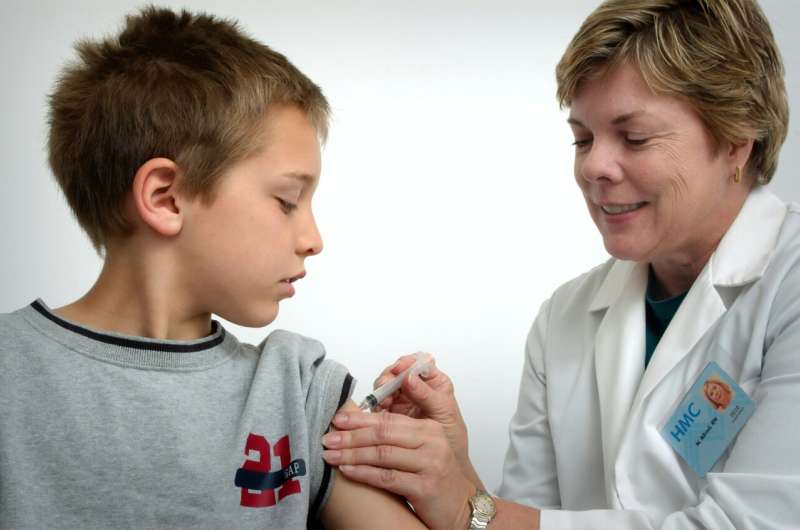This article has been reviewed according to Science X's editorial process and policies. Editors have highlighted the following attributes while ensuring the content's credibility:
fact-checked
peer-reviewed publication
trusted source
proofread
Study finds school entry requirements linked to increased HPV vaccination rates

A new study from researchers at Wake Forest University School of Medicine shows that school entry requirements are linked to an increase in human papillomavirus (HPV) vaccinations.
The findings appear online in Pediatrics.
HPV is a common sexually transmitted infection, which can cause health problems such as genital warts and certain cancers. To prevent infection, the Centers for Disease Control and Prevention (CDC) recommends that 11- to 12-year-olds receive two doses of the HPV vaccine, given 6 to 12 months apart. However, CDC data from 2022 shows that only 50% of 13-year-olds were up to date on HPV vaccinations.
School-entry requirements, where parents/guardians are required to vaccinate their children against HPV or receive an exemption before beginning a particular grade, are currently only found in Hawaii, Puerto Rico, Rhode Island, Virginia and Washington, D.C.
"There are a variety of state and federal policies designed to address low HPV vaccination rates among adolescents, but there has been little research to determine which policies are most effective," said Brigid Grabert, Ph.D., J.D., assistant professor of implementation science at Wake Forest University School of Medicine and senior author of the study.
In collaboration with researchers at the University of North Carolina at Chapel Hill and Duke University, Grabert and team systematically reviewed studies from 2009-2022 assessing the association between policies and HPV vaccination coverage among U.S. adolescents. The team identified 36 eligible studies and summarized findings based on policy type such as school-entry requirements, federally funded policies and educational requirements, which require schools or other organizations to distribute information about the benefits of HPV vaccination.
"We found consistent evidence that school-entry requirements work in places that require parents who don't vaccinate to submit an exemption," Grabert said. "We also found that school-entry requirements for other vaccines resulted in positive spillover effects for HPV vaccinations."
Grabert said that federally funded policies related to the Vaccines for Children program and Medicaid were also consistently associated with an increase in HPV vaccinations. However, few studies noted an association between educational requirements and HPV vaccination coverage.
"Policymakers should be aware that HPV-related cancers and disease can be reduced," Grabert said. "But not all policies are effective. Policymakers should carefully consider the best strategy to increase the administration of HPV vaccines."
More information: Mary Catharine McKeithen et al, Policy Approaches for Increasing Adolescent HPV Vaccination Coverage: A Systematic Review, Pediatrics (2024). DOI: 10.1542/peds.2023-064692




















